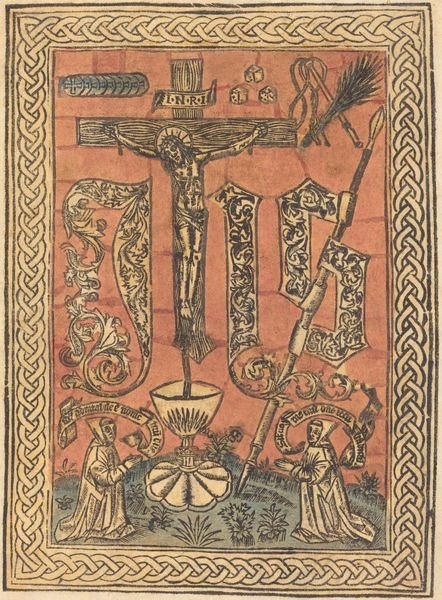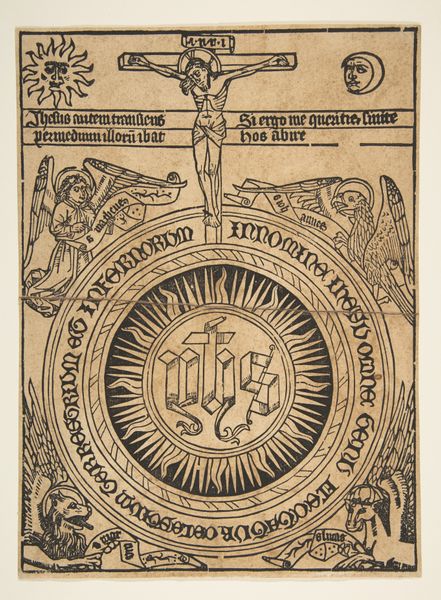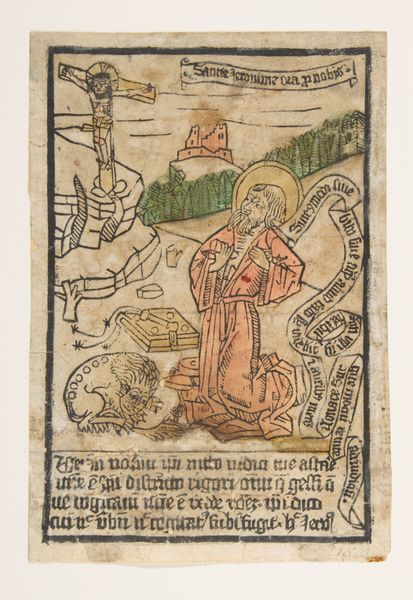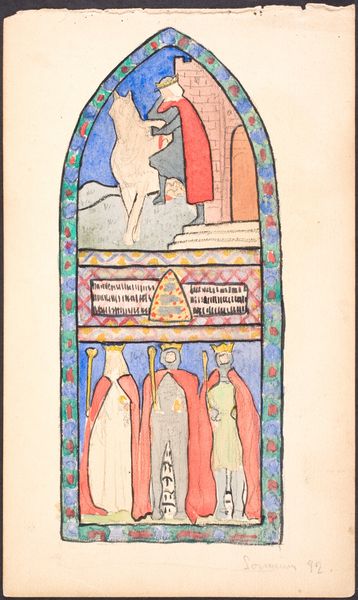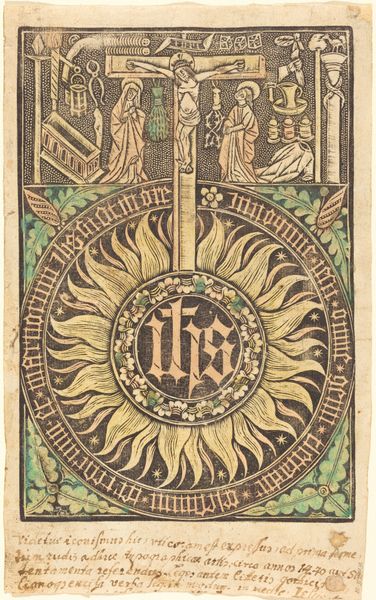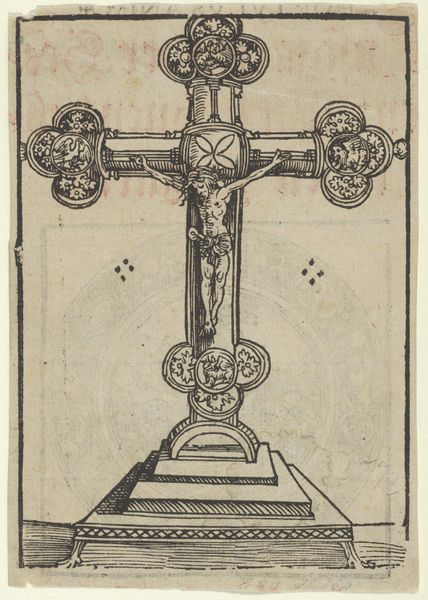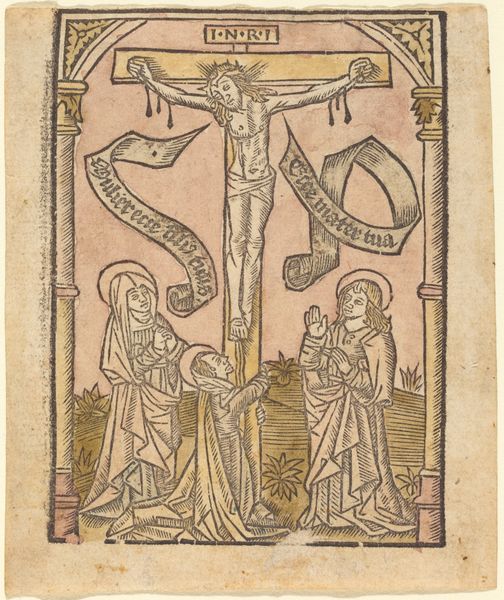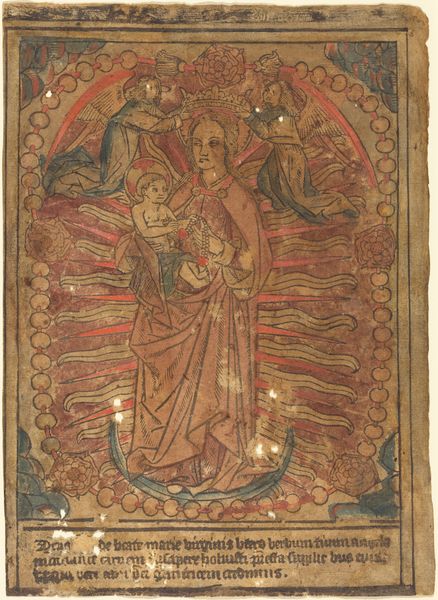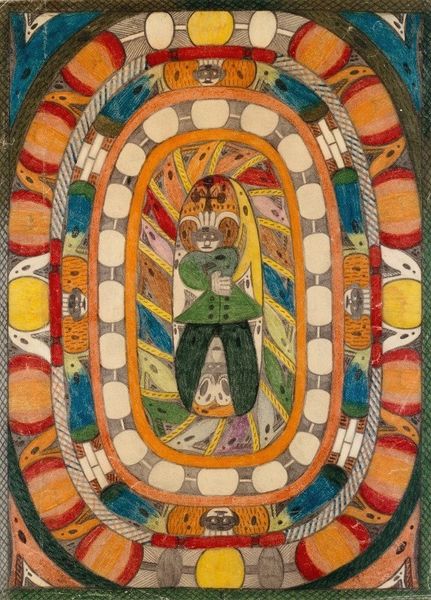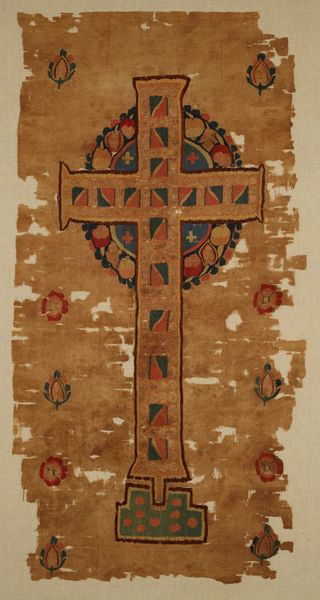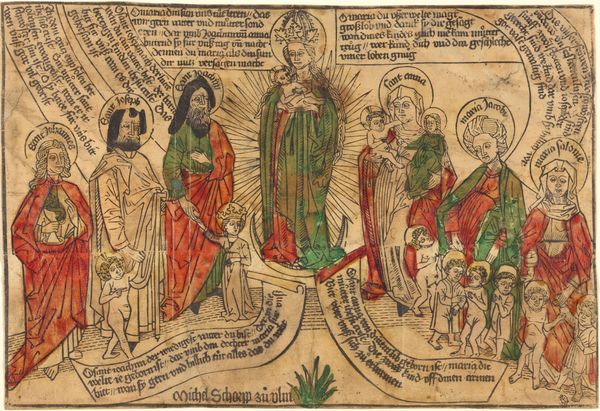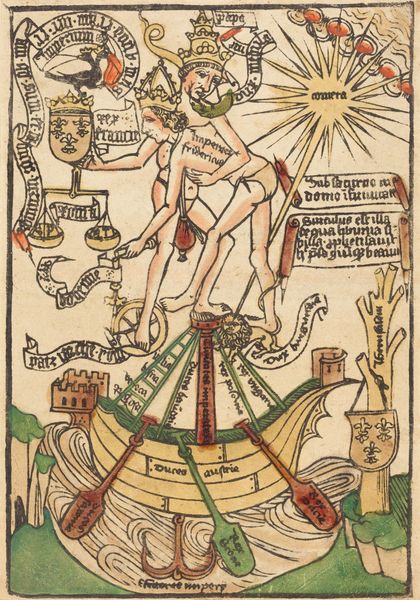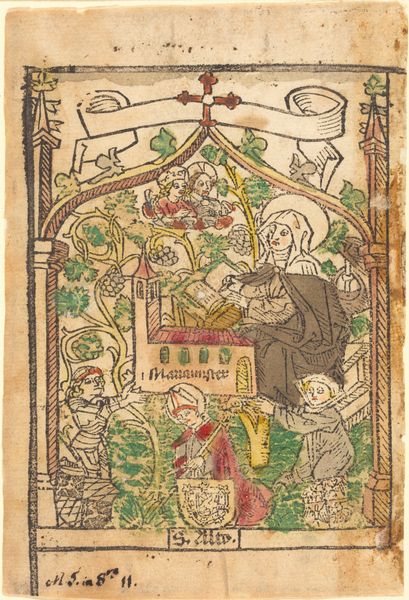
The Measure of the Side Wound and the Body of Christ c. 1484 - 1492
0:00
0:00
tempera, painting, print, paper, ink
#
medieval
#
tempera
#
painting
# print
#
gothic
#
paper
#
ink
#
coloured pencil
#
miniature
Dimensions: Overall: 12 x 8.1 cm (4 3/4 x 3 3/16 in.) overall (external frame dimensions): 39.4 x 31.8 cm (15 1/2 x 12 1/2 in.)
Copyright: National Gallery of Art: CC0 1.0
Editor: This is "The Measure of the Side Wound and the Body of Christ," dating from around 1484 to 1492. It seems to be tempera, ink, and possibly coloured pencil on paper. The intricate detail of the text surrounding the central image really catches my eye, like a handmade devotional object. What strikes you most about the materiality and process here? Curator: The means of production are crucial to understanding this piece. Consider the paper itself— likely handmade, perhaps even recycled. How does that humble material inform our reading of such a religiously significant subject? And look at the layering of ink and tempera; each deliberate stroke a testament to devotional labor. Editor: I see what you mean. The materials used make the image even more powerful. But how would that affect the perception of its value during that period? Curator: Think about the economics of art at this time. Printed images like this challenged the traditional hierarchies separating illuminated manuscripts and expensive panel paintings. By utilizing more readily available materials, the image becomes accessible to a broader segment of society. It democratizes faith, perhaps. Editor: So, by exploring the materials and the process, we gain insights into the social context, blurring those perceived boundaries of "high" and "low" art. The devotion is embodied in labor and available materials. Curator: Exactly! This wasn't just about depicting Christ. It was also about the act of creation, making devotion tangible and within reach for more people. Editor: I've learned to think beyond the religious symbolism to examine the materials used and what the printing and production reveals about art during this period. Thank you! Curator: My pleasure! Seeing how art’s accessibility might change perspective is an enriching realization, don’t you agree?
Comments
No comments
Be the first to comment and join the conversation on the ultimate creative platform.
